Qiushi Guo
SynRailObs: A Synthetic Dataset for Obstacle Detection in Railway Scenarios
May 16, 2025Abstract:Detecting potential obstacles in railway environments is critical for preventing serious accidents. Identifying a broad range of obstacle categories under complex conditions requires large-scale datasets with precisely annotated, high-quality images. However, existing publicly available datasets fail to meet these requirements, thereby hindering progress in railway safety research. To address this gap, we introduce SynRailObs, a high-fidelity synthetic dataset designed to represent a diverse range of weather conditions and geographical features. Furthermore, diffusion models are employed to generate rare and difficult-to-capture obstacles that are typically challenging to obtain in real-world scenarios. To evaluate the effectiveness of SynRailObs, we perform experiments in real-world railway environments, testing on both ballasted and ballastless tracks across various weather conditions. The results demonstrate that SynRailObs holds substantial potential for advancing obstacle detection in railway safety applications. Models trained on this dataset show consistent performance across different distances and environmental conditions. Moreover, the model trained on SynRailObs exhibits zero-shot capabilities, which are essential for applications in security-sensitive domains. The data is available in https://www.kaggle.com/datasets/qiushi910/synrailobs.
Enrich the content of the image Using Context-Aware Copy Paste
Jul 11, 2024Abstract:Data augmentation remains a widely utilized technique in deep learning, particularly in tasks such as image classification, semantic segmentation, and object detection. Among them, Copy-Paste is a simple yet effective method and gain great attention recently. However, existing Copy-Paste often overlook contextual relevance between source and target images, resulting in inconsistencies in generated outputs. To address this challenge, we propose a context-aware approach that integrates Bidirectional Latent Information Propagation (BLIP) for content extraction from source images. By matching extracted content information with category information, our method ensures cohesive integration of target objects using Segment Anything Model (SAM) and You Only Look Once (YOLO). This approach eliminates the need for manual annotation, offering an automated and user-friendly solution. Experimental evaluations across diverse datasets demonstrate the effectiveness of our method in enhancing data diversity and generating high-quality pseudo-images across various computer vision tasks.
A Universal Railway Obstacle Detection System based on Semi-supervised Segmentation And Optical Flow
Jun 27, 2024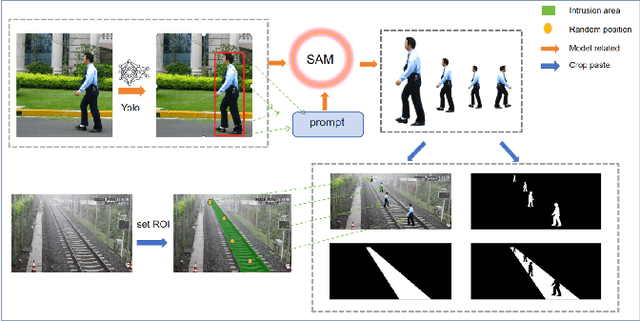
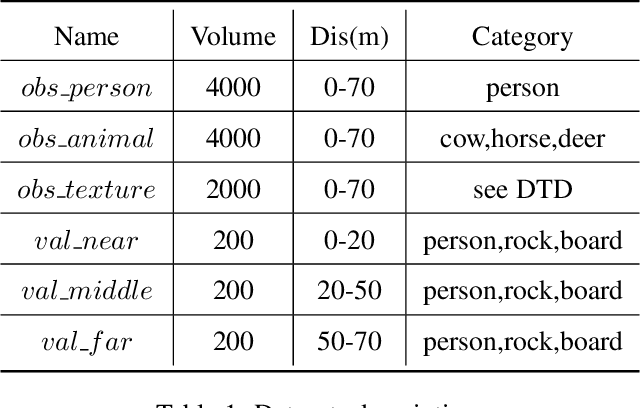
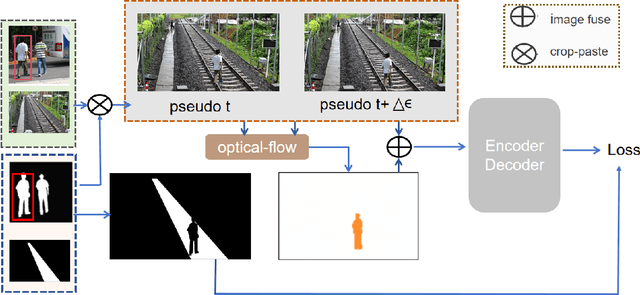
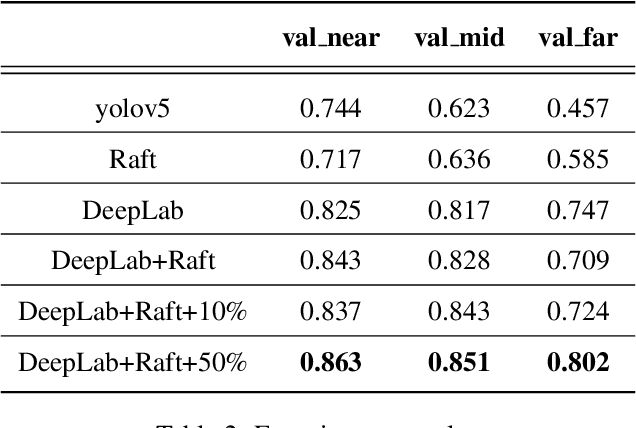
Abstract:Detecting obstacles in railway scenarios is both crucial and challenging due to the wide range of obstacle categories and varying ambient conditions such as weather and light. Given the impossibility of encompassing all obstacle categories during the training stage, we address this out-of-distribution (OOD) issue with a semi-supervised segmentation approach guided by optical flow clues. We reformulate the task as a binary segmentation problem instead of the traditional object detection approach. To mitigate data shortages, we generate highly realistic synthetic images using Segment Anything (SAM) and YOLO, eliminating the need for manual annotation to produce abundant pixel-level annotations. Additionally, we leverage optical flow as prior knowledge to train the model effectively. Several experiments are conducted, demonstrating the feasibility and effectiveness of our approach.
Enhancing Mobile Privacy and Security: A Face Skin Patch-Based Anti-Spoofing Approach
Aug 09, 2023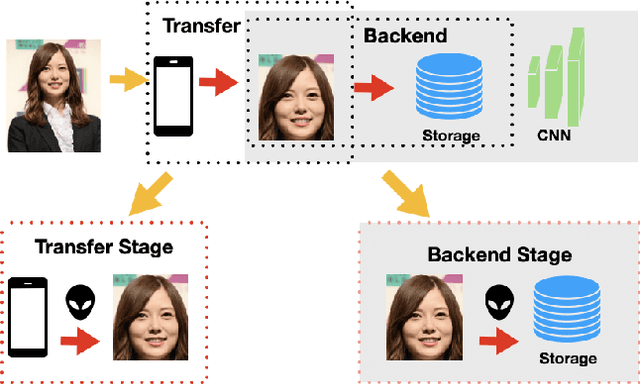
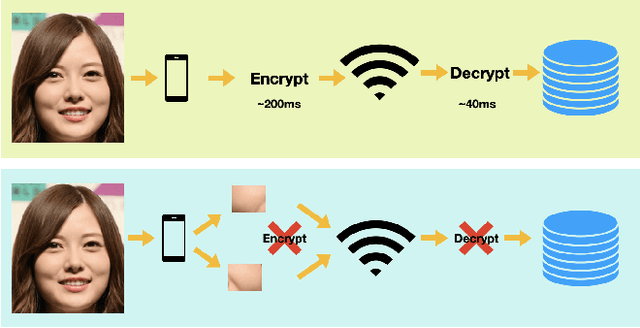
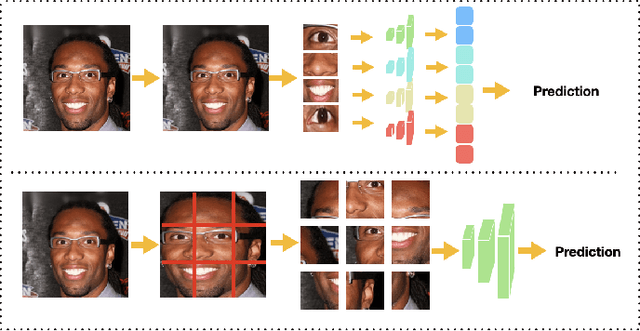
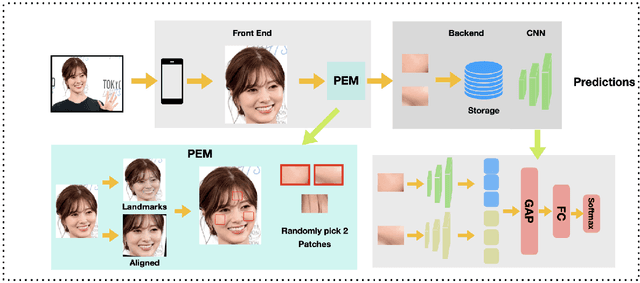
Abstract:As Facial Recognition System(FRS) is widely applied in areas such as access control and mobile payments due to its convenience and high accuracy. The security of facial recognition is also highly regarded. The Face anti-spoofing system(FAS) for face recognition is an important component used to enhance the security of face recognition systems. Traditional FAS used images containing identity information to detect spoofing traces, however there is a risk of privacy leakage during the transmission and storage of these images. Besides, the encryption and decryption of these privacy-sensitive data takes too long compared to inference time by FAS model. To address the above issues, we propose a face anti-spoofing algorithm based on facial skin patches leveraging pure facial skin patch images as input, which contain no privacy information, no encryption or decryption is needed for these images. We conduct experiments on several public datasets, the results prove that our algorithm has demonstrated superiority in both accuracy and speed.
FaceSkin: A Privacy Preserving Facial skin patch Dataset for multi Attributes classification
Aug 09, 2023



Abstract:Human facial skin images contain abundant textural information that can serve as valuable features for attribute classification, such as age, race, and gender. Additionally, facial skin images offer the advantages of easy collection and minimal privacy concerns. However, the availability of well-labeled human skin datasets with a sufficient number of images is limited. To address this issue, we introduce a dataset called FaceSkin, which encompasses a diverse range of ages and races. Furthermore, to broaden the application scenarios, we incorporate synthetic skin-patches obtained from 2D and 3D attack images, including printed paper, replays, and 3D masks. We evaluate the FaceSkin dataset across distinct categories and present experimental results demonstrating its effectiveness in attribute classification, as well as its potential for various downstream tasks, such as Face anti-spoofing and Age estimation.
 Add to Chrome
Add to Chrome Add to Firefox
Add to Firefox Add to Edge
Add to Edge